|
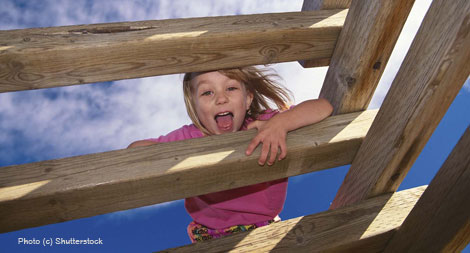
Creating an Environment For Unstructured Play
By Sam Flatman
What schools and communities can do to contribute to children's opportunities for unstructured, loosely supervised play.
No one knows exactly what the future holds for our children, but giving them plenty of confidence and happiness is an excellent way to prepare them for the unknown. With these two attributes, our children will approach life with a positive attitude and have the courage to find new solutions to old problems. Research confirms what experienced parents and teachers already know: Natural play is the best way to build happiness and confidence in children.
Natural Development
Unstructured, loosely supervised play opportunities improve children’s physical health, mental health, and emotional well-being. Playtime has an enormous positive impact on children’s happiness levels and self-esteem. It’s best to maximize play and minimize excessive time in front of a screen, which is linked to depression, anxiety, and nervous disorders in children. As little as twenty minutes of play in a green space can have a measurable positive impact on a child’s ability to concentrate in the classroom. There is also evidence that links play to cognitive developments and academic achievement.
Parents and teachers should move from away from thinking about play and learning as two separate entities and towards a natural model where they fully complement one another. Much can be learned from Finland’s system, which emphasizes the role of play in preparing children for learning at the age of seven. Although the country has a small population, it still punches way above its weight in terms of student achievement in Math and Science.
Increased Bonds
Play has an important developmental role in nurturing a child’s social and academic confidence. In The Play Return, a 2014 report commissioned by the Children’s Play Policy Forum in the UK, researcher and writer Tim Gill notes that access to playgrounds and play opportunities for children is an excellent predictor of overall family happiness. Play has even been shown to cultivate good relations between different ethnic and social groups in schools.
When children benefit through play, the local community benefits too. A child who grows up with access to playgrounds and play opportunities is more likely to give back to the community through volunteering than someone who grows up without access to play. Unstaffed public playgrounds are proven to decrease both vandalism and levels of antisocial behavior, which suggests that when given the opportunity children prefer playing to getting into trouble.
Wild play offers many excellent learning opportunities for children. Loosely supervised children discuss rules and manage disputes when they play amongst themselves.
Emotional skills, from taking turns to making apologies, have a chance to develop without adult guidance. It’s entirely plausible that the social skills learned in these play situations stimulates a greater sense of community in children, and this is what encourages them to give back through volunteering when they are older.
Beneficial Play Environments
Providing our children with a monochrome concrete landscape around our schools isn’t good enough. In order to maximize physical activity in children, a play environment needs a variety of bright colors, different markings, modern play equipment, and all the accessories needed for games. Research shows that when these steps are implemented, children get more physical activity in their unstructured break than they do in their physical education lessons.
Here are some of our favorite play landscapes from recent projects that we have completed at Pentagon Sport, where I work.
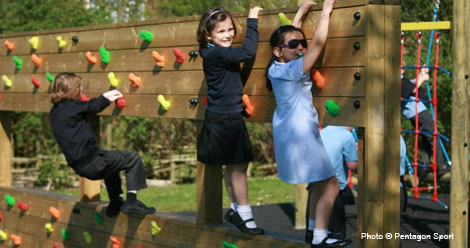
The brightly colored grips used on this climbing wall invite children to use the equipment. Climbing walls are great for improving balance and coordination, and strengthening the upper body.
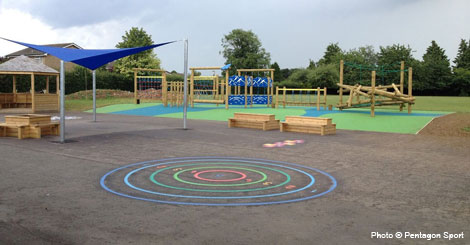
There are many different kinds of markings that can be incorporated into playgrounds, no matter how big or small the space. This first image shows how a colored wetpour surface can be used as a foundation for climbing frames to make the ground softer and safer for children. The numbered bull’s eye is a great target for outdoor math games.
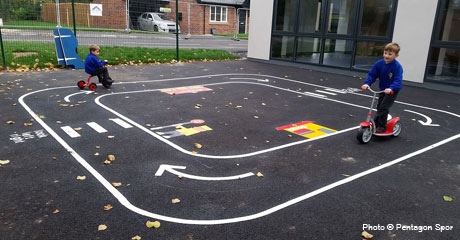
Another example of playground markings are these fun race tracks which make the most of a small space. The town-style layout encourages children to engage in creative play, pretending that they are racing around the town on their bike or in their car.
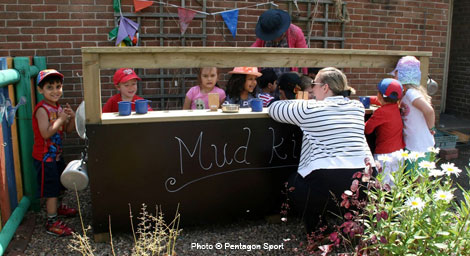
Using new, innovative play equipment is an excellent way to engage children in play. Mud kitchens are very popular with early learners and primary schools at the moment. Mud kitchens encourage children to work together and use their imagination to make various mud creations. Molding, shaping and mixing mud engages children in sensory play too.
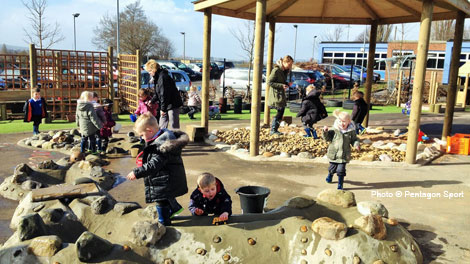
Waterways are another excellent piece of play equipment which can be easily integrated into the science and math curriculum to develop an understanding of the water cycle as well as boost problem-solving skills, ability to measure water, and scientific thinking.
How Much Play?
Older children need at least an hour of moderate to strenuous physical activity each day, according to experts. Kids who are under the age of five and able to walk by themselves should get at least three hours of exercise daily. Encouraging physical activity is the best step that a school can take to decrease levels of obesity and keep children fit. Outside of school, this should ideally be supplemented by at least three to four afternoon and evening play opportunities.
Sam Flatman has been working in the education and play sector for the past ten years and has a passion for outdoor education. He is an Educational Consultant for Pentagon Sport – www.pentagonsport.co.uk – which designs innovative playgrounds for schools. Sam believes that outdoor learning is an essential part of child development, and should be integrated into the school curriculum. Sam lives in Bristol, England with his two sons.
Copyright © Life Media
Privacy Policy
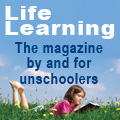 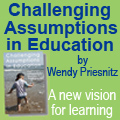



|

